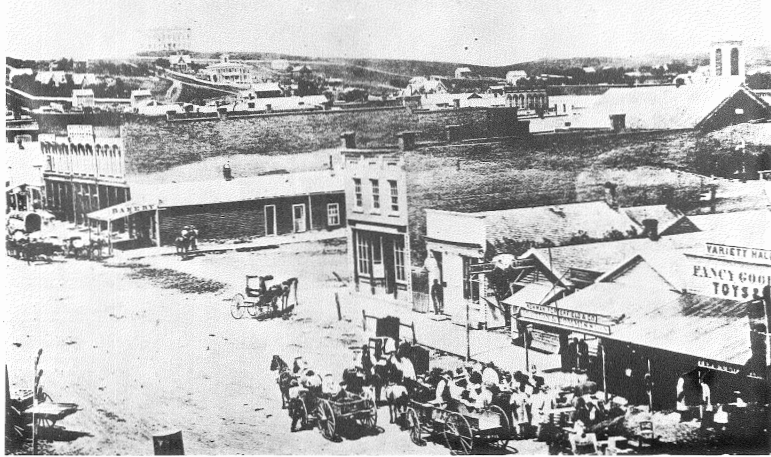Joseph Warren Arnold was born in Honesdale, Wayne County, Pennsylvania in 1841. He attended school in Springville, Kentucky, and Portsmouth, Ohio. When he felt the lure of the gold fields of Montana Territory, he was living in Galena, Illinois. Arnold, then 23, joined a party of other Galena residents in this venture. He left Galena with Eli A. Collins, the father of his friend, John S. Collins, who was already in Omaha, Nebraska Territory. Arnold and Collins traveled to Iowa City by train, where Arnold and another traveler, James McNear, finished the journey to Council Bluffs by wagon.
The Collins family was taking six wagonloads of goods, under the leadership of John Collins, to Montana, where they planned to open a store. Collins was to play an important role in the history of the Great Plains, later serving as post sutler at Fort Laramie, as well as taking part in various peace treaty meetings. In 1904 he published his reminiscences, Across the Plains in ’64.
The Collins party left Council Bluffs on March 23, 1864. Their first camp was one mile west of the village of Omaha, present 24th and Cuming streets. The diary tells of their adventures as they traveled west along the Platte River, the North Platte River, and then the Sweetwater River to South Pass in present Wyoming. Here they took the Lander Road until it joined the North-South road between Salt Lake City and Virginia City. While in Montana, Arnold lived at Nevada City, near Virginia City. He worked as a hotel clerk and later visited various mining camps prospecting. Two years later in the autumn of 1866, Arnold returned to “the States” by way of a Missouri River steamboat.
Arnold’s diary records his journey overland to Montana, where he built himself a cabin, worked as a hotel clerk and later did some prospecting in various gold mining camps. He returned from the gold fields by Missouri River steamboat.
Read the full article here.
Note: the word Indian is used instead of Native American as it was the norm at the time.

This is what 13th and Farnam streets in Omaha looked like in 1864.




